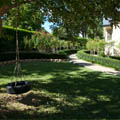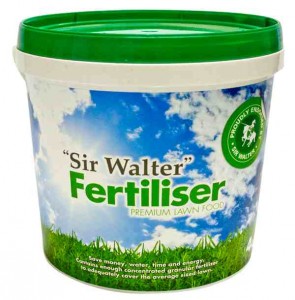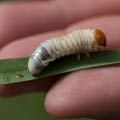 Autumn is the time of year when the leaves start changing into a kaleidoscope of colour. The days will start to get shorter and the cooler and the nights will become a little crisp. You will find yourself reaching for your doona as we bid our old friend Summer ‘adieu’, until next time…..
Autumn is the time of year when the leaves start changing into a kaleidoscope of colour. The days will start to get shorter and the cooler and the nights will become a little crisp. You will find yourself reaching for your doona as we bid our old friend Summer ‘adieu’, until next time…..
Now before you start packing up your outdoor equipment in preparation for a winter of hibernating indoors, your lawn needs some TLC. You may not realise this, but autumn is a very important time of the year for your lawn. This is the time when you need to get your lawn ready to battle the elements of winter, to try to minimise the effects of the cooler weather.
There may not be much sunshine up here, but there is still plenty of warmth in the soil which means your lawn is still actively growing. This is exactly why autumn is the perfect time to fertilise to encourage strong root development, winter colour & overall health. As a guide, aim to be winter ready around Easter, so fertilise in March or April, or even earlier if you’re in a cooler climate. Don’t leave it too late or the ground temperature will drop too low, and the fertiliser won’t have the required effects.
The best fertiliser to use is a good slow-release NPK fertiliser such as the Sir Walter Fertiliser. Containing optimum levels of Nitrogen (N), Phosphorous (P) and Potassium (K) plus essential minerals and trace elements, it has been specially formulated for Sir Walter lawns to provide all the nutrients it will need to stay strong and healthy. Don’t be afraid to be slightly heavy handed either, (unless you’re in the tropics) we have had a fairly harsh summer so your lawn is probably still suffering a little from the beating it took then.
 During autumn, you should still keep your eye out for lawn grubs as well. These annoying little critters are active later in summer and into autumn, and can cause a lot of damage to your lawn. If you have a Sir Walter lawn, the army worms will generally only eat the leaf, however in other lawns they have been known to eat the lot! Treat them straight away to minimise their damage. If you do experience an infestation, be sure to fertilise straight away, as you’ll need your lawn strong and healthy to repair itself before winter. This will avoid encouraging weeds and other nasties into the barer patches.
During autumn, you should still keep your eye out for lawn grubs as well. These annoying little critters are active later in summer and into autumn, and can cause a lot of damage to your lawn. If you have a Sir Walter lawn, the army worms will generally only eat the leaf, however in other lawns they have been known to eat the lot! Treat them straight away to minimise their damage. If you do experience an infestation, be sure to fertilise straight away, as you’ll need your lawn strong and healthy to repair itself before winter. This will avoid encouraging weeds and other nasties into the barer patches.
 Lawn compaction is also a problem to look out for over winter, particularly if you’ve experienced some high rainfall recently, or you have areas which are heavily shaded that tend to get a little damp. When the soil becomes compacted, the roots aren’t able to breathe, and this will cause the lawn in these areas to thin out and eventually die. Grab your pitch fork or strap on your aerator sandals, and loosen up the soil. If you tend to have quite clay soils, an application of lime and gypsum would also be very beneficial at this time.
Lawn compaction is also a problem to look out for over winter, particularly if you’ve experienced some high rainfall recently, or you have areas which are heavily shaded that tend to get a little damp. When the soil becomes compacted, the roots aren’t able to breathe, and this will cause the lawn in these areas to thin out and eventually die. Grab your pitch fork or strap on your aerator sandals, and loosen up the soil. If you tend to have quite clay soils, an application of lime and gypsum would also be very beneficial at this time.
Speaking of lime, the use of synthetic fertilisers can tend to change the pH levels of your soil, so it’s a good idea to regularly test your soil using a simple soil test kit. The optimum level is around 6.5; if it’s lower, then you should sweeten the soil with some lime and dolomite; if it’s higher, then a gradual application of sulphate of ammonia will have you back in business in no time.
Lastly, but no less importantly, when it comes to mowing, autumn is the time to start reducing the frequency. Leaving a bit more length on the leaf will mean your lawn is better equipped for photosynthesis and therefore weed suppression. When it comes to shaded areas, the longer the length, the better chance it will have against frost bite. Now you can gather your firewood, and you and your lawn will be ready for winter!




